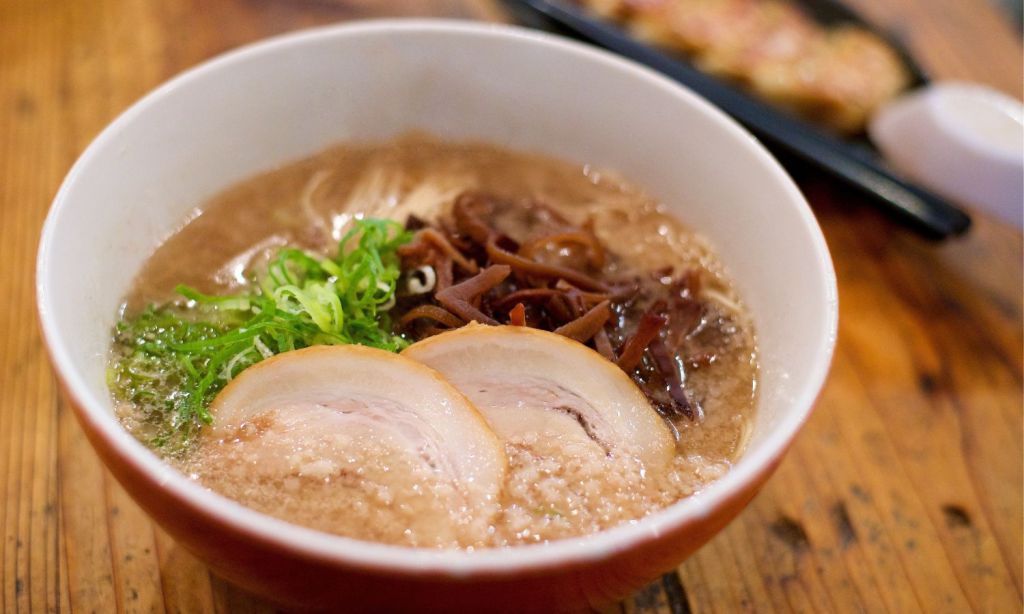With Fukuoka in Japan named one of only 30 destinations on Lonely Planet’s Best in Travel list for 2023, no doubt tourism there next year will be booming. If you’re one of the many who’s taken notice and is planning a trip there, it’s worth learning a bit more about how best to experience what the area is most known for: food.
“Food lovers will delight in Fukuoka’s mouth-watering culinary options, from the incredible mobile food scene to, of course, the internationally renowned Hakata ramen,” writes Lonely Planet. “We think food lovers will find Fukuoka an exciting addition to their must-travel list.”
Tonkotsu ramen, one of the top three most famous ramen styles in Japan, originated in Fukuoka and the region also lays claim as the birthplace of udon and soba noodles, and nearly 70 sake breweries, with over 1,000 varieties bottled up each year.

Related: First Time in Japan? From Popular to Remote, These 9 Hotspots Have You Covered
Related: Winter Wonderlands: These Japanese Hot Spots Are Cooler Than Cool
Before we get into Fukuoka’s foodie culture, where exactly is it, and how can you get there? The city is located in the northern part of the country’s Kyushu Island. Travellers can fly direct to Fukuoka International Airport via Tokyo’s Haneda Airport with Japan Airlines and All Nippon Airways. The city is also accessible by Shinkansen (bullet train) from Tokyo, Osaka and Hiroshima.
Dining Etiquette in Fukuoka
Fukuoka does not have any local etiquette or table manners specific to the city, they do have a special way of closing a casual party. In Japan, many people do “Ipponjime” or “sanbonjime”, but people in Fukuoka do “Hakata te ippon”.
Japanese table etiquette dictates that you should try your best to finish your meal, bring the serving dish to your mouth and not vice-versa and don’t disassemble a dish.
Where to Eat in Fukuoka
So, now that you know how to eat, where should you go?
Yatai Stalls
Feast on the streets of Fukuoka City at the open-air yatai (food stalls) that pop up across the city every night. Serving up seriously good street food fare, travellers can tuck into traditional Japanese dishes including yakitori (skewers), oden (hot pot), tempura and gyoza galore.
Over 100 stalls set up shop across the city every night at the open-air yatai (food stalls), each dishing up something different. From 6pm until the early hours, locals and visitors alike sit shoulder to shoulder enjoying a splash of sake, speciality Tonkotsu style ramen, yakitori (skewers), oden (hot pot), tempura and gyoza. Check out one of the main areas serving up the goods at Nagahama, Tenjin and Nakasu.
Fukuoka city is home to the extremely popular Hakata (or Hakata-style) Ramen, a type of Tonkotsu noodle dish. While you can certainly find it in Yatai stalls, go to Shin Shin, a famous spot with walls adorned with Japanese celebs who have visited.

Fine Dining Restaurants
Two luxury restaurants not to miss while in Fukuoka are Barba Bianca and Yorozu. Located in a 120-year-old house, Barba Bianca sees long-time chef and sommelier Kazuya Okubo using seafood sourced fresh from the market every morning, pesticide-free vegetables and locally-grown meat to create his courses of pastas and other dishes.
Yorozo combines the artforms of tea and cocktails, in an intimately modern salon. Guests are introduced to pairings of traditional sweets, savoury dishes, tea and alcohol. The tea preparation is a performance that involves serving the liquid at three low temperatures from a kettle designed by owner Suguru Tokubuchi.
Sweet Treats
Ishimura Manseido is a long-standing confectioner, founded in Fukuoka in 1905. It’s known for its Tsuru no Ko sweets which are a Hakata favourite and, in addition to selling sweets, the main shop provides explanations of how its sweets have gone hand-in-hand with Hakata’s history, traditions, and culture. It has several items related to Hakata on display.
The store’s interior functions like a gallery of Hakata sweets. It tells the story of how Tsuru no Ko was conceived not long after the company was founded and the old wooden confectionery molds that have been used for decades are on display.
Green Tea
Fukuoka also produces some of the highest quality green tea in Japan, often used in tea ceremonies which are a sacred Japanese tradition.
Travellers can visit the Yame Central Tea Garden, a 70-hectare plantation, for spectacular views or take in more of the region on the Kyushu Olle Yame Course. The Course features a series of trails that each showcase a different element of Kyushu culture. Visitors can hike, taste the tea, and breathe in the fresh air and lush green views across the region.
Read more stories from The Latch and subscribe to our email newsletter.







